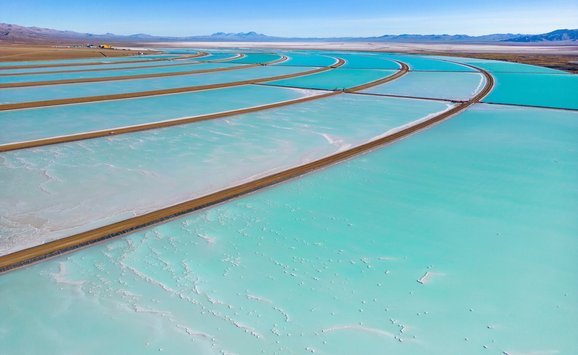ON MARCH 16, 1978, shortly after the United Nations International Marine Consultative Organization (IMCO) had concluded a round of negotiations on tanker safety regulations, the Amoco-Cadiz—an American-owned ship, built in Spain, chartered to a multinational company, manned by an Italian crew, and registered in Liberia—ran aground off the northwest coast of France, spewing 216,000 tons of Middle Eastern crude and 4,000 tons of her own fuel onto the north Brittany coast. This was the largest oil spill heretofore known to mankind.
It has been charged that the spill could have been prevented. The disaster began as a more or less "normal" accident, with the failure of the ship's steering mechanism. It is unclear whether the ship had inadequate backup steering, or whether the crew was incapable of making effective use of the backup controls. Some reports indicate that the owners of the Amoco-Cadiz and the owners of the tug Pacific wasted time in haggling over the terms of the salvage contract. Whether or not this was true, the rescue attempt was too little and too late. The Amoco-Cadiz received aid from only one tug before its towline snapped in the rough seas. By this time the ship had drifted out of the traffic lanes and into French territorial waters where it ran aground.

Controlling oil spills. The Amoco-Cadiz—only four years old—had met all the international safety requirements existing at the time of its grounding. This can be taken to mean either that the regulations were inadequate, or that the spill—though unfortunate—was just one of those unlikely events that reasonable regulations cannot prevent.
The evidence is difficult to sort out. Since its inception, IMCO's effectiveness in reducing marine pollution has been questioned. Critics view IMCO's rules and regulations as public placebos which do not address the problem in a meaningful way. Cited as an example of the organization's ineffectiveness, is the rejection, at the February 1978 meeting in London, of two major antipollution measures—namely, mandatory double bottoms for new tankers, and segregated ballast systems for existing tankers. Rather the package agreed upon included the compromises: protectively located segregated ballast for new tankers and crude oil-washing systems for existing product carriers.
President Carter had earlier called for construction and equipment regulations, which would include double bottoms, segregated ballast, inert gas systems, backup radar schemes with collision-avoidance equipment, and improved emergency steering standards for U.S. and foreign tankers over 20,000 deadweight tons entering U.S. ports. After the February 1978 IMCO meeting, however, the U.S. Coast Guard proposed, and Congress subsequently passed in the Ports and Waterways Safety Act of 1978, standards and regulations which are very similar to those agreed to by IMCO. Segregated ballast for existing tankers was deemed too expensive, as was the double-bottom requirement for new ships.
That these are compromises and less effective in reducing both accidental and intentional pollution (that is, tank-cleaning operations) is generally agreed upon. However, accurate estimates of the additional costs and, particularly, the additional benefits of the more stringent measures are not forthcoming, and without such estimates it is difficult to decide what degree of risk is acceptable.

Clean up. A closely related question concerns the complementary measures to be taken to minimize the damages from tanker accidents, since they are not all preventable. In the case of the Amoco-Cadiz spill, the French Senate Commission Report pointed out that such measures were found wanting. The French government was largely uninformed of the pending catastrophe until the ship actually went aground. Although international rules give the coastal country the right to intervene if a ship is in trouble nearby, this does not apply if the ship does not request aid. At one point while the Amoco-Cadiz was drifting into French territorial waters, French signal stations inquired if additional help was needed but were informed that it was not. Once the grounding had occurred and oil began leaking, the government's concern was how to minimize the damage to the French coast. The first reaction in grounding cases is to pump out as much oil from the vessel as possible. This was not done in the case of the Amoco-Cadiz because of inclement weather and poor survey charts. Severe storms eventually broke up the supertanker on March 19 and, in order to avoid an oil leak of several months' duration, the French navy then used submarine bombs to release the remaining oil at once.
Once the oil was released, further complications developed. Local politicians demanded immediate action, while national authorities advised patience. Clean-up efforts were uncoordinated—at least initially—and too much in the nature of ad hoc squeegee affairs, but it is not necessarily true that the cleanup could have been more efficiently managed. As has been pointed out by clean-up experts, the technology for cleaning up oil spills is not a well developed science. Opinion is divided on how to clean up even smaller spills, and the size of the spill and weather and wave conditions made this one even more difficult.
After the Amoco-Cadiz wreck, the French government did move the shipping lanes farther from the coast, and now all ships in trouble are required to notify the French navy. The French are also seeking tighter national powers to control, or even to ban, some ship movements inside the twelve-mile limit.
The problems in staging an effective clean-up effort are both technical and financial. Antipollution strike forces, organized and trained to operate effectively on short notice, are very costly. Even if governments could afford such investments, the experts do not agree on the best way to handle the oil. Some advocate breaking it up with detergent; some would try to skim it off the surface. From Le Conquet to Saint-Malo, the French marshaled a massive clean-up effort. Whether the methods used were the most advisable remains unclear. In some areas it was possible to take some preventive steps. Some oysters were removed from their soon-to-be-polluted environs and shipped to safer areas. In other places the upper layers of beach sand were removed and stored in a safe area in order to provide a clean layer of sand once the oiled layers had been removed. However, for the most part, beaches, oyster beds, and everything else that could not escape was oiled. When the oil washed ashore, tractors with front-end loaders and farm carts dug it up and hauled it and the oiled materials away. Farmers' "honey wagons" pumped up black slime, and fire company hoses steam-cleaned rocks. Thousands of military personnel pushed, scraped, dug, and carried oil away from the beaches to settling ponds. Most of the oiled oysters were destroyed because their oil concentration was too high for consumption, and they could not be cleaned. In the Isle Grande area an oiled marsh was partially dug out as the only way to remove the oil which had permeated the marsh vegetation just as water permeates a sponge.

Remaining damages. The clean-up effort has removed some of the most obvious aspects of the pollution. The beaches appear relatively clean, although in some areas the sand is still sticky or may have oil beneath the surface. There are still stains, some from this spill and some from previous spills such as the Torrey Canyon, but the rocks along the coast and the harbors appear relatively clean. However, neither all the oil nor its effects have disappeared. During the December tempests high-energy waves exposed buried oil, causing a foul smell. Oil is retained in areas such as marshes where it is virtually impossible to remove, and where it will take years, if not decades, to degrade. Recovery of the fish and bird populations will also take time. At least one local population may not recover—the puffin population of the Seven Islands Bird Sanctuary.

Liability and compensation. Who pays the cost of cleaning up an oil spill? Who pays the damage costs? IMCO, in its 1969 International Convention of Civil Liability for Oil Pollution Damage (CLC), imposed a primary insurable liability on tanker owners for oil pollution damage to a member nation's coastline and territorial seas. In 1971 the International Convention on the Establishment of an International Fund for Oil Pollution Damage (Fund Convention) provided a supplementary fund to be created by assessments against owners of oil cargo. These two conventions are intended to be complementary and provide up to $36 million (expandable to $72 million if it is proved necessary) for the recovery of costs or damages, or both, that are associated with oil pollution. To date, thirty-five nations have ratified the CLC. As the Fund Convention and the CLC provide coverage only to their member nations, the industry itself has initiated two schemes which are vessel-specific rather than nation-specific.
Although these plans place some responsibility on tanker companies, the limited extent of the liability is a weakness, and there is little economic incentive for companies to reduce accident rates.
In addition, the total coverage is not really adequate for spills having the magnitude of the Amoco-Cadiz. The French government, taking advantage of the fact that the United States has not ratified the CLC or Fund Convention, has filed suit in New York against the Amoco International Oil Co. for $300 million, considerably in excess of what is provided for by the industry or IMCO agreements. Even this amount is unlikely to fully recover the damages. To the extent that compensation is insufficient, or does not filter down to the actual damages (by and large the people of Brittany), they will, by default, bear the damage costs.
The United States has attempted to enact liability and damage compensation legislation for oil spills. The House of Representatives has passed legislation limiting liability in a single incident to $30 million, but has established a fund up to $200 million, financed by a 3 percent tax per barrel on all oil moved in U.S. waters, as a backup fund for cleaning up oil spills, if the parties responsible cannot be quickly located, or if the clean-up costs exceed the shipowner's legal liability. So far, the Senate has not passed the legislation, largely as a result of division over whether states should continue their own clean-up and liability systems.
Although the $200 million fund provided would be larger than that of IMCO or the industry, it may still be too small for spills of the Amoco-Cadiz magnitude. Also, there remains the problem of incentives for the tanker industry. It has been argued that no limit should be placed on the liability of tanker owners for damages. The industry, on the other hand, claims that no insurance would be available without a liability ceiling. Although making the source of the pollution liable for all (or a large part of) clean-up and damage costs would not eliminate such spills, it would provide greater incentives for instituting more design and operational safety measures to reduce the likelihood of such spills.
For intentional pollution resulting from tank-cleaning operations, it would be necessary to combine the liability scheme with a source-identification scheme. A number of different schemes have been proposed, but so far most of these methods are only in the experimental stages. However, in September 1978 the Baltic Sea nations signed a pact for a one-year trial of a detection system using metal particles to trace the source of illegal tanker spills. If this trial proves successful, it may well be a useful tool in controlling pollution from oil spills.







